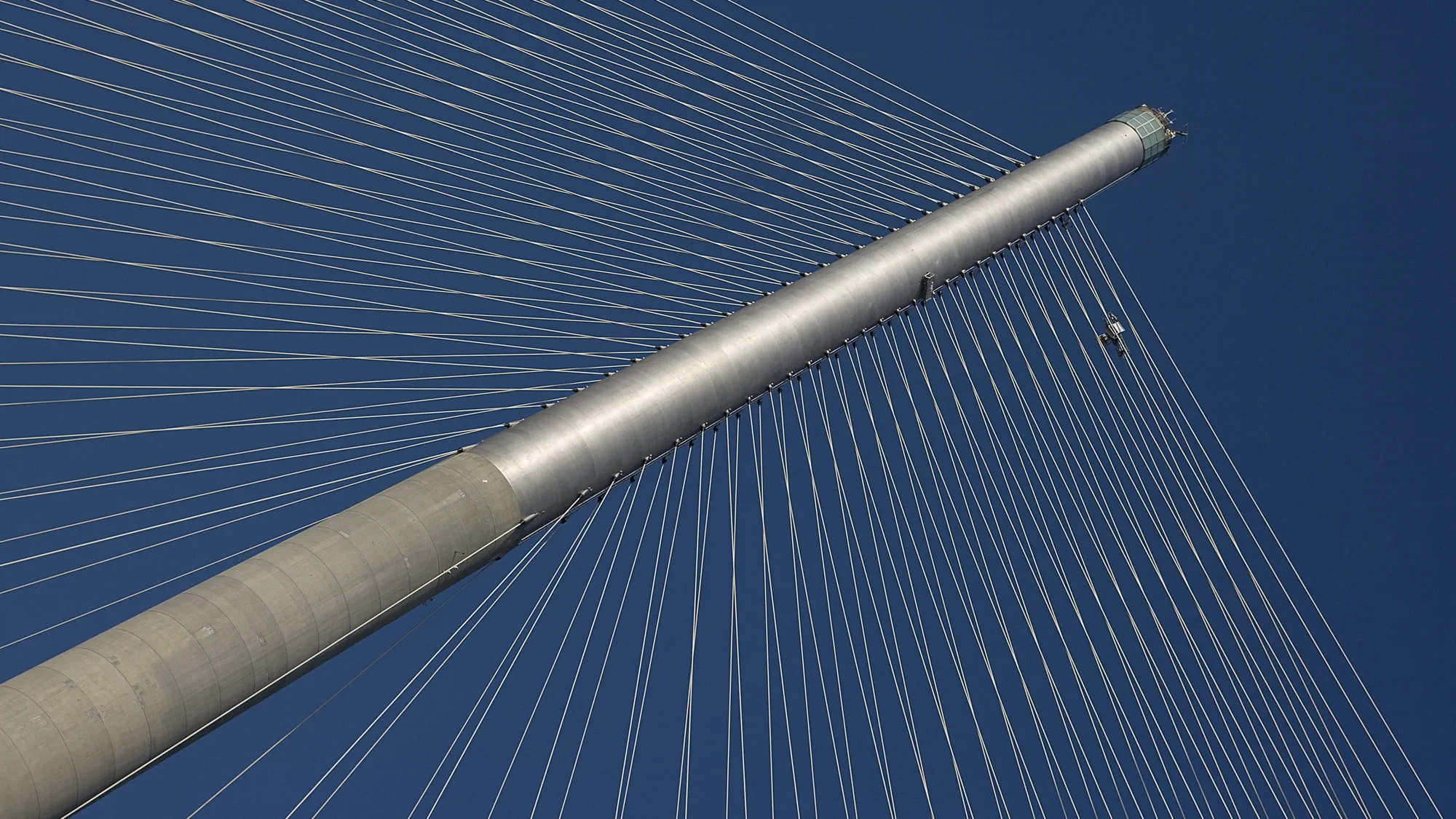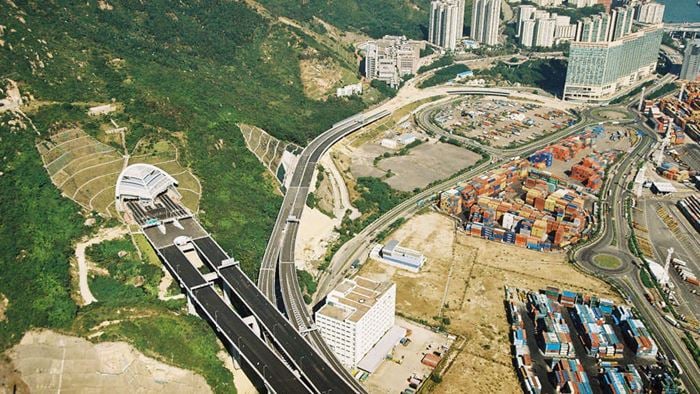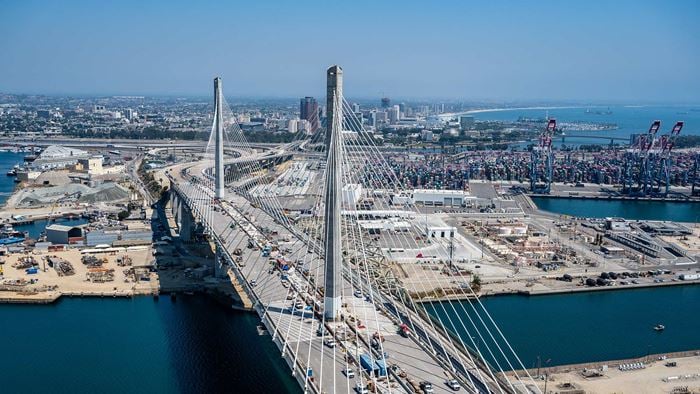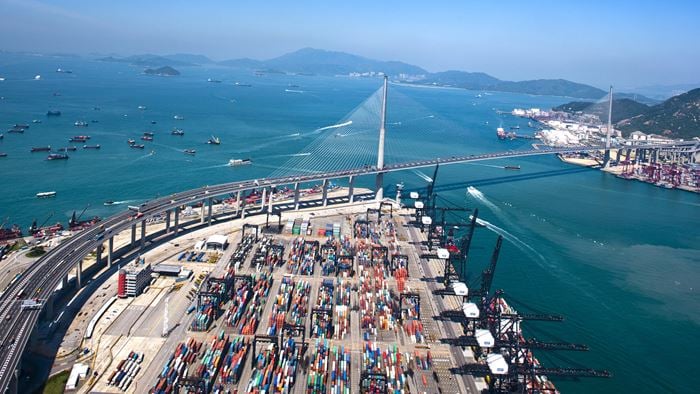Stonecutters Bridge is the world’s second longest spanning cable-stayed bridge at the time of completion, with a main span of 1,018m. The bridge straddles the Rambler Channel at the entrance to the Kwai Chung container terminals, providing a landmark gateway to Hong Kong, one of the world’s most vibrant trade centres.
The 1.6km long crossing is the centrepiece of the new Route 8 strategic link, a 7.6km long, dual three-lane expressway linking Cheung Sha Wan and Tsing Yi Island. The route improves access between the International Airport and the urban areas of West Kowloon, and provides enhanced links to the container port.
With a highly distinctive form, its key design features include a 1,018m long, steel main span, supported by two 290m tall concrete and stainless steel towers and a 53m-wide deck split into two streamlined boxes and connected by cross girders. It will be one of two cable-stay bridges in the world with a span in excess of 1,000m.
Project Summary
1018m main span
290m two tall concrete and stainless steel towers
1.6kmoverall length

A bridge to withstand strong typhoon
Building a bridge with such a large span exposed to strong typhoon winds posed many challenges to the Arup design team including analysis of wind patterns at the site and mitigating against potential ship impact.
This was in addition to challenges relating to working at such a large-scale and height, whilst also ensuring minimum disruption to shipping traffic.
©John Nye
Managing the size
Because of its sheer size, accurate dimensional control is essential to ensure that all parts of the bridge fit together as designed. This requires great control during casting of concrete elements and prefabrication and assembly of large-scale steel elements that make up the deck.
The most challenging aspect of construction was the coordination between the various elements of the bridge. Close coordination was required between the temporary and permanent works and between on-site and off-site construction.
 ;
;









